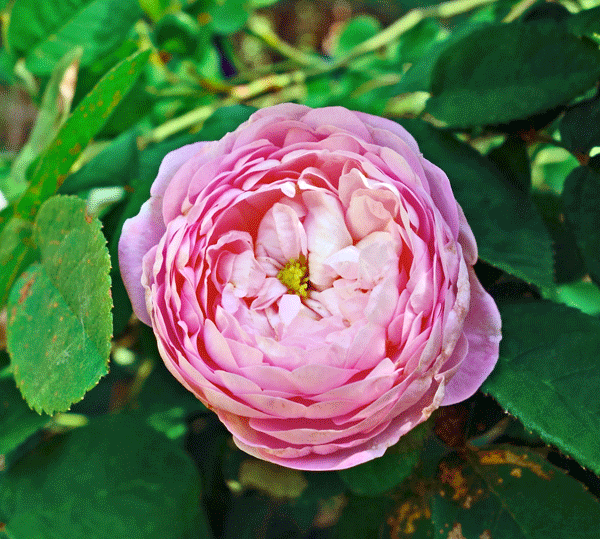In the spirit of practicing what I preach, I set out to do a little pruning around the ol’ homestead last week.
Since I cut back the hydrangeas pretty hard last year, this time round I did only a bit of shaping. The fuchsias haven’t gone totally dormant this year, but as they bloom on new wood I cut them back by a third. Then I looked at the roses. I have a few climbers and several shrub roses. This is how I’m going to get the best rose show ever this year.
I want my roses to produce lots of roses on a compact shrub and not just a few exhibition-size blooms, so I prune my shrubs moderately.
My goal is to keep the center of the plant open for good air circulation, aiming for a vase-shaped bush with an open center. I’ll cut out canes that cross — saving the better of the two — prune spindly and diseased stems, and dead wood.
I’ll also prune canes that appear weak or broken. Healthy canes appear green or reddish while old and dying canes are brown. Cut back the remaining stems by about third.
When pruning, cut canes at a 45-degree angle just above an outward facing leaf bud or a swelling on the cane. Slant the cut away from the bud to encourage growth outward.
Clean pruners after every use to prevent the spread of disease and keep your pruners sharp to make clean cuts.
Heirlooms roses, such as David Austin and other old antique garden roses, require less pruning because their open look is part of their charm.
Same goes for climbing roses. Cut out extra stems if there are too many and also cut back long established canes to about the place where they are slightly thicker than a pencil. Then cut each side stem down to several inches. This will cause the cane to flower along its complete length for a beautiful spring display.
My roses still have many of last year’s leaves and are pushing new growth already. I know those old leaves will spread fungus spores — and possibly infect the new growth — so I’ll patiently pluck them off.
If you have a huge climber, this might not be possible and spraying with fungicide may be your only option if you’ve had disease problems in the past. Rake up the debris beneath the plant and discard to eliminate overwintering fungus spores.
It’s a good idea to spray the bare plant, coating the trunk, branches and twigs and the surrounding soil with a combination organic horticultural oil to smother overwintering insect eggs and a dormant spray like lime-sulfur or copper soap to kill fungus spores.
If you usually only have problems with black spot you can use a mixture of one teaspoon of baking soda with a few drops of light horticultural oil in a quart of water and spray every seven to 10 days during the spring.
Pruning intimidates some gardeners, but when you understand the reasons for making the cuts, pruning becomes less daunting. The reasons to prune are for health, appearance, and to control size.
Prune your roses throughout the growing season, too. Deadheading, or cutting off spent flowers, encourages plants to re-bloom.
Every time you cut a rose bloom to bring it indoors or deadhead a fading rose, prune the stem down to shape the plant at the same time. Prune to a spot that has at least five leaflets. Roses grow from the point where they are cut, so consider the overall shape of the plant as you snip.
Don’t worry whether you’re pruning job is perfect. Roses are super forgiving and you can always trim them up again later. Roses are like redwoods — you can’t kill one — they’re the Energizer Bunnies of the plant world.
– Jan Nelson, a landscape designer and California certified nursery professional, will answer questions about gardening in the Santa Cruz Mountains. E-mail her at [email protected], or visit www.jannelsonlandscapedesign.com to view past columns and pictures.













